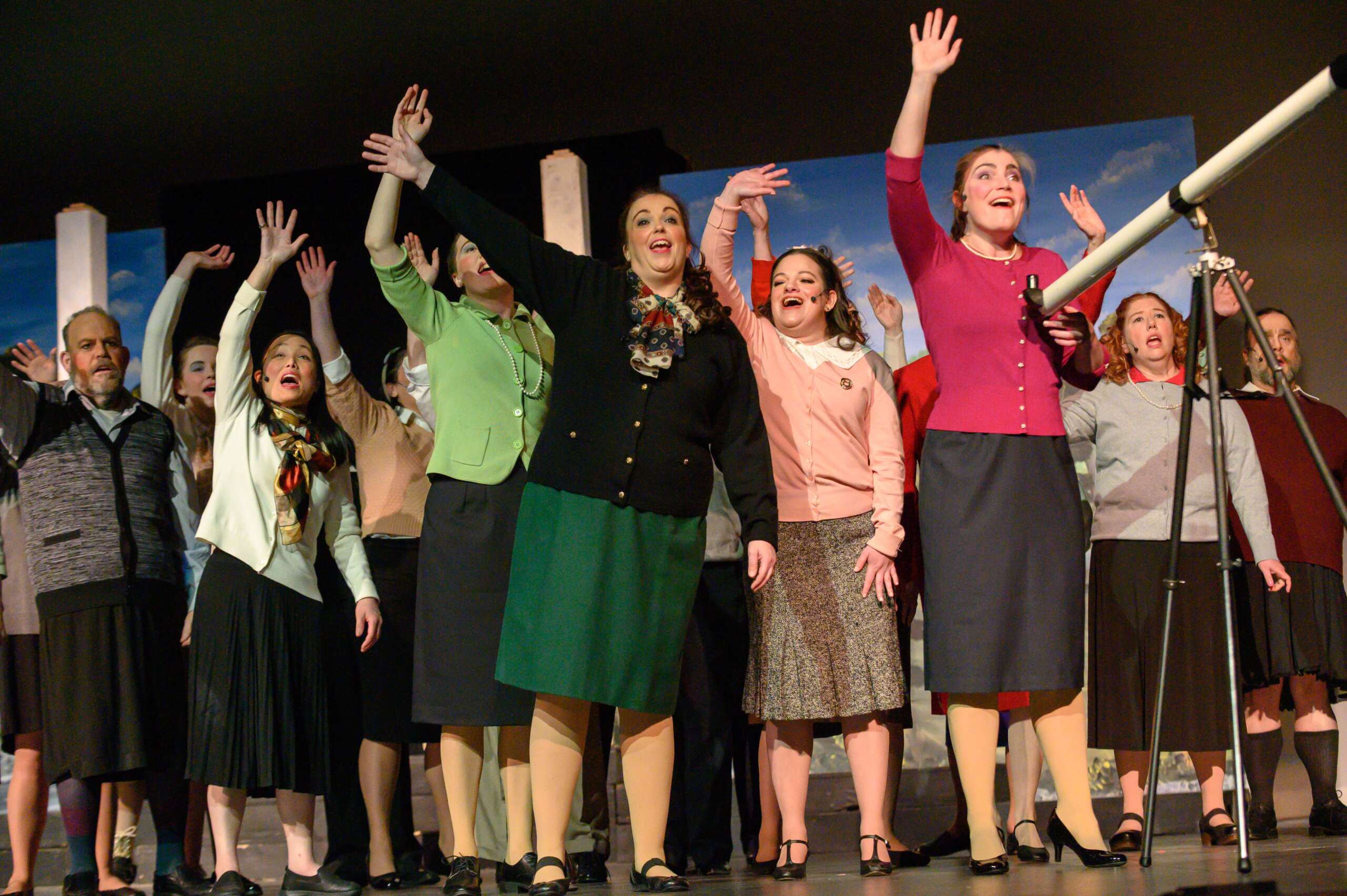Share This Article
The Sudbury Savoyards are committed to producing the works of Gilbert & Sullivan “’on a grand scale,’ with a large chorus, a full orchestra, costumes, lighting, sound, and top-notch performers.” Their recent production of Princess Ida or, Castle Adamant ran from February 24-March 2 at Lincoln-Sudbury Regional High School. Being able to experience a full-on, semi-professional production was a tremendous treat.
Princess Ida was librettist W.S. Gilbert and composer Arthur Sullivan’s (aka Gilbert and Sullivan) eighth comic opera for the D’Oyly Carte Opera Company at London’s Savoy Theatre (hence the Sudbury “Savoyards”). Its initial run was not a great success due to a particularly hot summer in London, even though it is quite funny, even brilliant. It is still performed today, but not as frequently as The Mikado, The Pirates of Penzance, and Iolanthe, perhaps for good reason: this is their only opera written in iambic pentameter (think Shakespeare) and one of their longest, making it more difficult to stage.
Written during the Victorian era, the opera “tackles the idea of the war between the sexes” and “satirizes the topics that were controversial in Victorian England: feminism, women’s education, and Darwinian evolution,” according to the program. It is based on Tennyson’s poem, “The Princess: A Medley,” and Gilbert’s libretto sticks to Tennyson’s original story about the heroic Princess Ida, who runs a women’s university at Castle Adamant. She teaches her students that women are superior to men and that they can and should live without them. Prince Hilarion, who has been betrothed to Ida since infancy, and two friends sneak into the college disguised as female students to try to get her back. At the time, women’s education in England was somewhat controversial and a new concept, with only a handful of women’s colleges available.
The show’s director, Rebecca Graber, is a graduate of the all-women Wellesley College (full disclosure: I am also a graduate of one of the other “Seven Sisters”); in the program notes she says she “has a front row seat to the discussions around gender and gendered spaces.”
Graber sets her Princess Ida sometime in the 1940s or 50s. Students wear long plaid skirts with sweaters or vests donning breast patches bearing the university crest, so it has a bit of a Harry Potter look to it. Graber says, “In our culture, no item of clothing is more strictly coded than a skirt, so a skirt could be a delineator; wear one, and presto, you’re a woman and treated as such.” When Hilarion and his two friends disguise themselves, Graber simply has them roll up their pant legs and don wrap-around plaid skirts without the benefit of wigs or any other outwardly “feminine” identifiers—and yet everyone at the school still believes they are women! It’s a clever idea that I felt was partially successful. With their facial hair and deep voices, they were still recognizable as men. The audience had to use their imagination a bit too much. Apparently, there was some discussion about this decision prior to the performance, yet Graber prevailed.
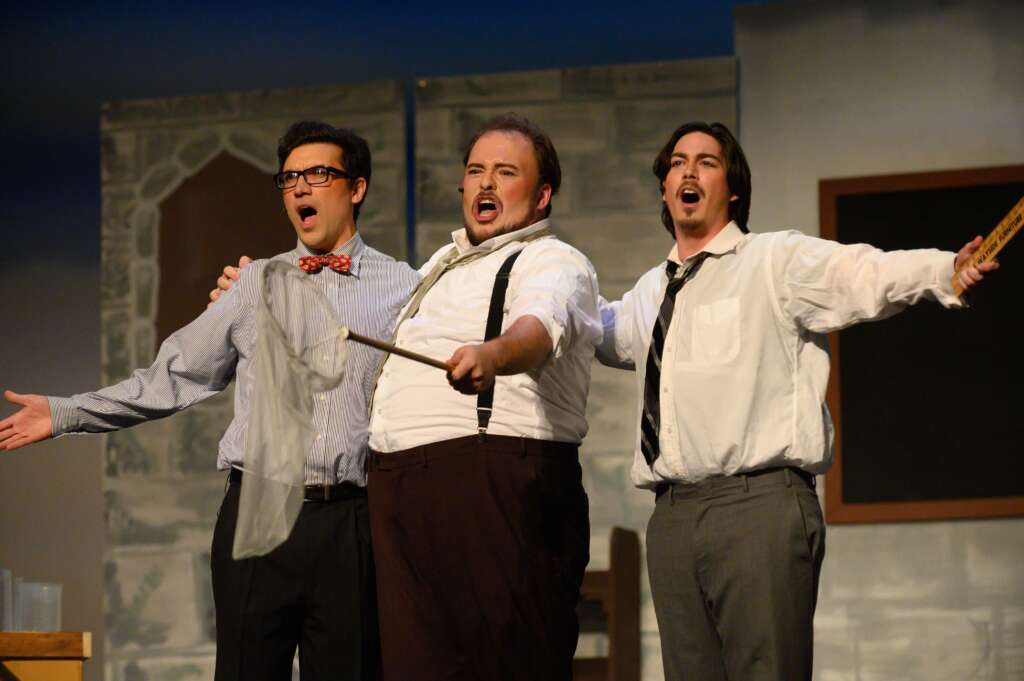
Community theater companies are limited by whoever auditions—talent, enthusiasm, and the audience’s imagination make up for any differences between what you see on stage and what’s in the script, so there was a bit of a discrepancy in the ages of the characters and the ages of the performers. But no matter: the singing, acting, and orchestra, for the most part, were quite good, especially for an amateur opera company.
For example, this was the first Gilbert and Sullivan opera to require the lead to have a more dramatic voice. I saw an evening performance, where the role was played by soprano Maria Bozich, a graduate of the New England Conservatory of Music and now a professional opera singer (one of several true professionals in the cast). Her bell-like voice carried the show, and she played the role with an unwavering “adamance” in her belief that women can be self-sufficient, even when she decides to give up the reins of the university to Lady Blanche, the school’s Professor of Abstract Science, to reunite with her husband Hilarion. Contralto Sara DeLong (a classically trained performer, who also directs and manages a music ensemble by day) plays Blanche with equal parts gravitas and bemusement, managing to keep a straight face in this passage when Ida asks whether she should resign her role:
The five Subjunctive Possibilities
The May, the Might, the Would, the Could, the Should
Can you resign? The prince
May claim you; if
He Might, you Could – and if you Should, I Would!
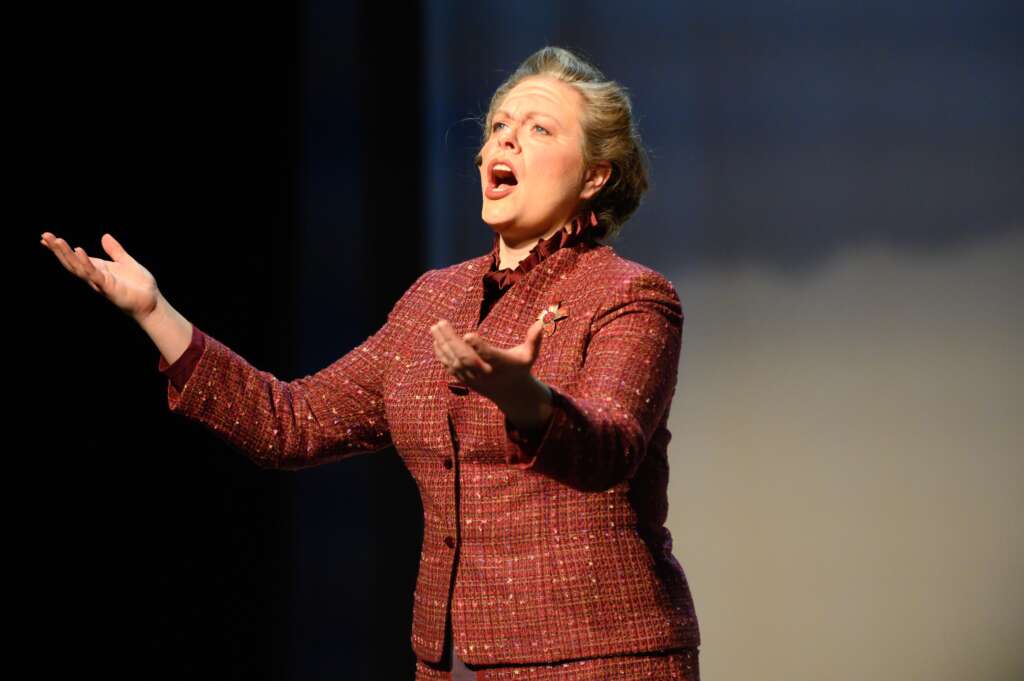
Hilarion is played by Michael Gonzalez, who like Maria Bozich’s Ida, is also an NEC-trained professional opera singer. Rightfully praised as “visually and sonically stunning,” his rich and smooth tenor was the aural equivalent of silk. I just wish there would have been more chemistry between the two.
Several other cast members stood out: Lady Blanche’s daughter Melissa, played by mezzo-soprano Sara Mitnik, had a beautiful voice, and added a touch of wackiness to the production; Danielle Schevchenko’s sweet Lady Psyche; baritone David Smyth’s Florian; and tenor Thai Johnson, who as Cyril, attempted to sing his one aria as a drunkard—no easy feat!
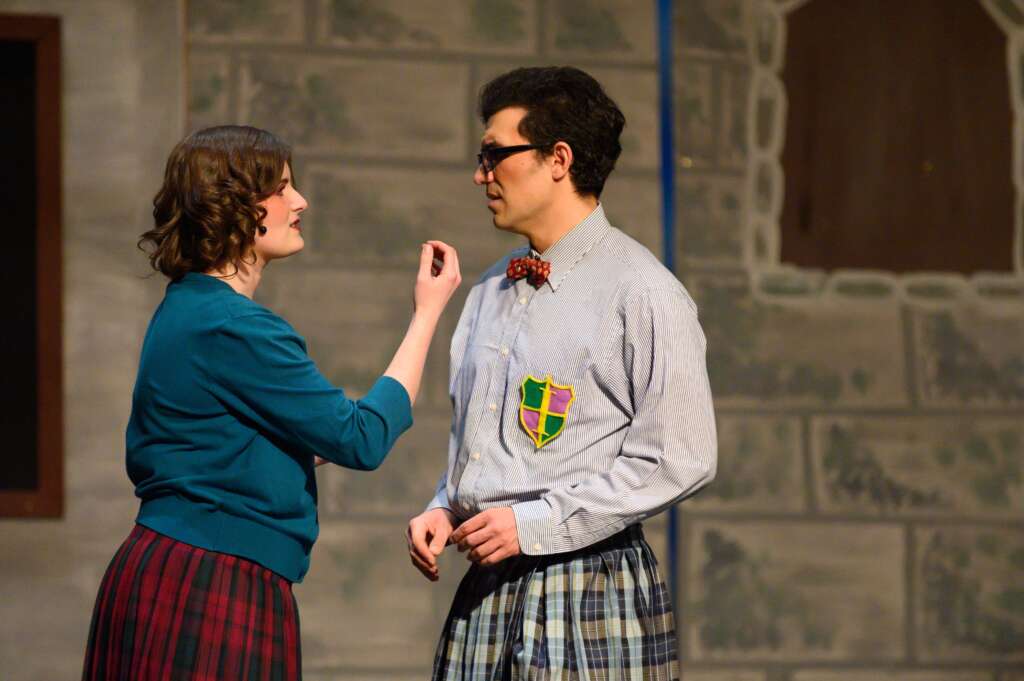
Five cast members had Covid, including the lead actor playing King Hildebrand, Hilarion’s father. He was replaced by Tim Ayres-Kerr, who held a script throughout the show, but acted as if he’d performed the role before. He had the right combination of English accent and beautiful voice. Although only 30 years-old, he seemed much older, thanks to a great make up job and his acting ability.
Music Director Stephanie Beatrice, who is described in the program as “a force of nature with a baton,” led the orchestra with confidence, striking just the right balance of tempo and volume to accompany the singers. She is an opera singer and pianist, as well as a conductor, so she knows the ropes.
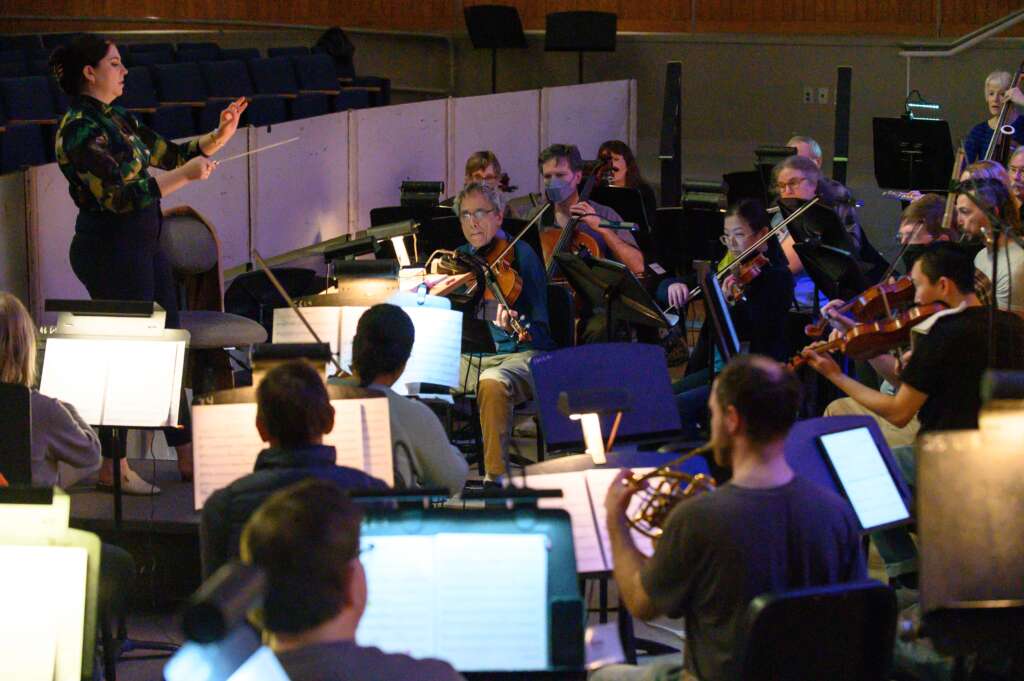
It’s getting harder and harder to find a theater company in the region that is willing to stage a Gilbert and Sullivan opera. The Lyric Stage Company of Boston used to perform one every year, but no more. We have the Sudbury Savoyards to thank for keeping these fourteen “Savoy operas,” alive, performing their timeless works right in our own back yard—lucky us! Don’t take them for granted; make sure you see their next show—traffic and parking are never an issue either.

